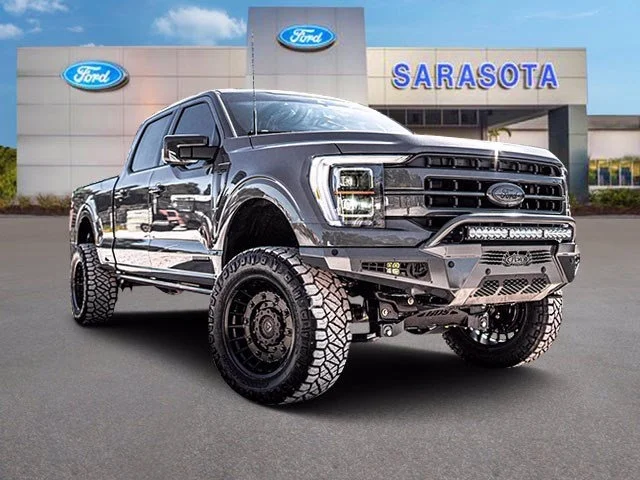Lifted trucks are a popular choice for off-road enthusiasts, as they offer a unique combination of style, performance, and versatility. However, owning a lifted truck also comes with a unique set of maintenance challenges. In this article, we’ll provide a comprehensive guide on how to maintain a lifted truck, ensuring that it remains in top condition and delivers optimum performance. By following these essential tips, you’ll be able to enjoy your lifted truck for many years to come.
Understanding the Unique Maintenance Needs of Lifted Trucks
Before diving into the specific maintenance tasks for your lifted truck, it’s essential to understand why lifted trucks have unique maintenance requirements.

When a truck is lifted, its suspension, drivetrain, and other components are modified to accommodate larger tires and increased ground clearance. These modifications can place additional stress on various parts of the vehicle, making regular maintenance crucial for ensuring the truck’s longevity and performance.
So You’re Interested in Lifted Trucks?
People buy lifted trucks in a variety of different shapes, sizes, and conditions. Yes, some are simply better than others, but all of these vehicles require the right maintenance. When you get your first lifted truck, it’s important to understand exactly what maintenance procedures are required, when to do them, and how to do them.
Regularly Inspect and Rotate Your Tires
Lifted trucks often have larger, more aggressive tires than stock vehicles. While these tires provide improved off-road performance, they can also wear down more quickly and unevenly. To maintain optimal tire performance, regularly inspect your tires for signs of wear, such as uneven tread patterns or sidewall damage.
Additionally, it’s essential to rotate your tires every 5,000 to 7,000 miles to promote even wear and prolong their lifespan.
Keep Your Suspension System in Check
The suspension system of a lifted truck is crucial for providing a smooth and comfortable ride, as well as ensuring proper handling and control. To maintain your suspension system:
- Inspect your shocks and struts for leaks or damage. Replace them if necessary.
- Check the bushings and ball joints for excessive wear or play. Replace them if they show signs of wear.
- Look for signs of sagging or uneven suspension components, such as leaf springs or coil springs. Address any issues promptly to prevent further damage or performance issues.
Pay Close Attention to Your Drivetrain
Lifted trucks often experience increased stress on their drivetrain components due to the added weight and strain of larger tires. To maintain your drivetrain:
- Inspect your driveshafts and U-joints for signs of wear or damage. Replace them if necessary.
- Check your differential and transfer case fluids regularly, and change them according to the manufacturer’s recommendations.
- Ensure your axles and CV joints are in good condition, and replace them if they show signs of wear or damage.
Prioritize Brake System Maintenance
With larger tires and increased ground clearance, lifted trucks often require more stopping power.

It’s crucial to regularly inspect and maintain your brake system to ensure optimal braking performance and safety. Key tasks include:
- Inspecting brake pads for wear and replacing them when necessary.
- Checking brake fluid levels and changing the fluid according to the manufacturer’s recommendations.
- Inspecting brake lines and hoses for damage or leaks, and replacing them if needed.
Stay on Top of Steering and Alignment
Lifted trucks can be more susceptible to issues with steering and alignment due to the changes in suspension geometry. To keep your truck handling correctly and prevent premature tire wear, regularly inspect your steering components for signs of wear or damage. Additionally, have your truck’s alignment checked and adjusted by a professional at least once a year or whenever you notice uneven tire wear, steering issues, or vibrations.
Regularly Lubricate Chassis Components
Lifted trucks often have additional chassis components, such as aftermarket control arms, sway bars, and track bars. These components may require regular lubrication to ensure smooth operation and prevent premature wear.
Check your owner’s manual or consult with a lifted truck specialist to determine the recommended lubrication schedule for your specific components. Regularly lubricating your truck’s chassis components will help maintain proper function and prolong their lifespan.
Keep Your Engine Running Smoothly
While many maintenance tasks focus on the unique aspects of lifted trucks, it’s still essential to stay on top of regular engine maintenance. This includes:
- Changing your engine oil and filter according to the manufacturer’s recommendations or more frequently if you frequently drive off-road or in harsh conditions.
- Inspecting and replacing your air filter as needed to ensure proper airflow and engine performance.
- Checking and maintaining your cooling system, including the radiator, hoses, and coolant levels, to prevent overheating.
Don’t Neglect Your Lifted Truck’s Exterior
A well-maintained exterior is not only visually appealing but also essential for protecting your truck from the elements and potential off-road damage.
To keep your lifted truck looking its best:
- Regularly wash and wax your truck, paying special attention to the undercarriage and wheel wells, where dirt and debris can accumulate.
- Inspect your truck’s paint and bodywork for scratches, dents, or rust, and repair any damage promptly to prevent further issues.
- Ensure your aftermarket accessories, such as bumpers, light bars, or fender flares, are securely attached and in good condition.
Summary – Learn the Proper Maintenance of Your Lifted Truck
Maintaining a lifted truck involves a combination of regular vehicle maintenance tasks and specific attention to the unique components of lifted trucks. By following these essential tips by Sarasota Ford, and adhering to a consistent maintenance schedule, you can ensure that your lifted truck remains in top condition, delivering optimal performance and enjoyment for years to come.
Remember, a well-maintained truck is not only more reliable and safe but also more likely to retain its value and appeal to potential buyers if you ever decide to sell.





